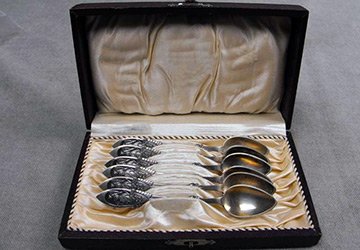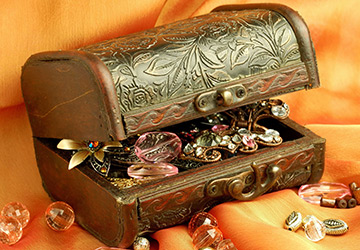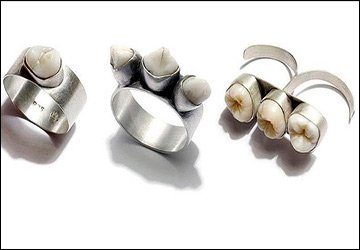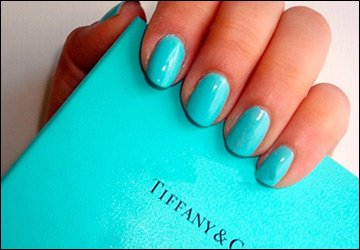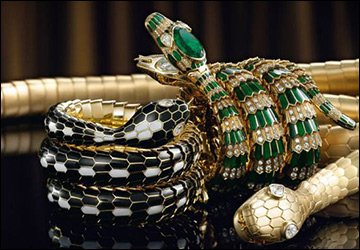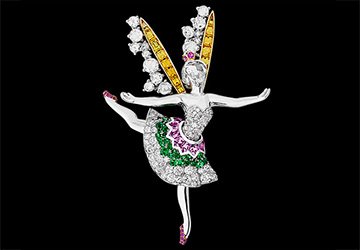Jewelry
Antique and vintage silver jewelry
Russian silver jewelry - they have been famous for their sophistication and beauty throughout the centuries. Developing far from Western European jewelry art, Russian jewelry art was closely associated with folk traditions. Even in Kievan Rus there were silversmiths who mastered the complex technique of processing precious metals, skillfully combined colored stones, pearl, silver, enamels. Yes, not many of them were able to transfer their skills in time. Someone got lost in the whirlwind of terrible and bloody events, someone was captured during the Tatar-Mongol yoke, someone was simply ruined by the princely civil strife. And already in the 15th century, Ivan III began to send his ambassadors to Europe so that the best craftsmen "... went to the Grand Duke for rent."
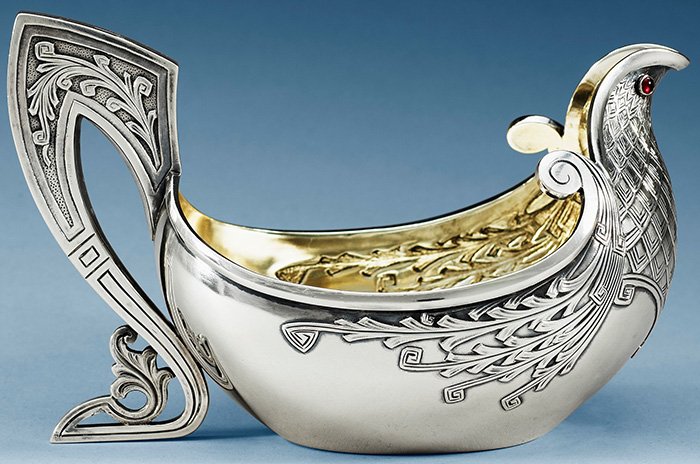
All processing techniques were used by the masters in their works on silver, but the Russian style continued to live and lives in silver jewelry. The Moscow masters were especially fond of the Russian style. It was they who used folk motifs and ornament, and on silver dishes - historical subjects and views of cities, and native landscapes.
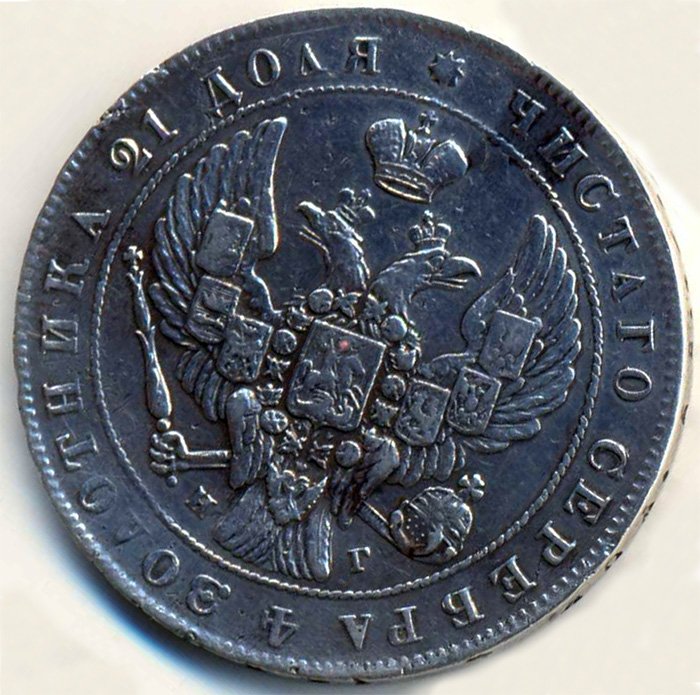
The path traversed by Russian jewelry art is interesting and difficult.
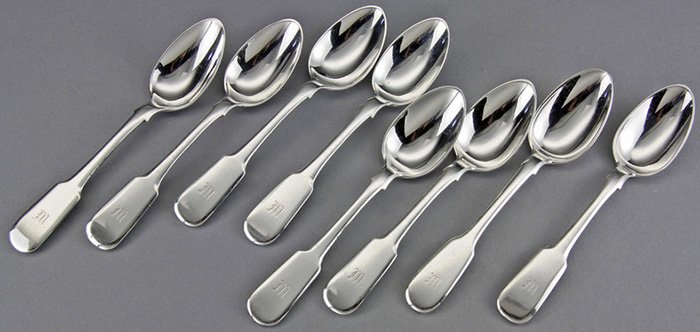
Peter I loved to show the luxury and grandeur of the Russian Empire, although he himself ate from ordinary dishes, with wooden forks and spoons, and his served - from silver and gold.
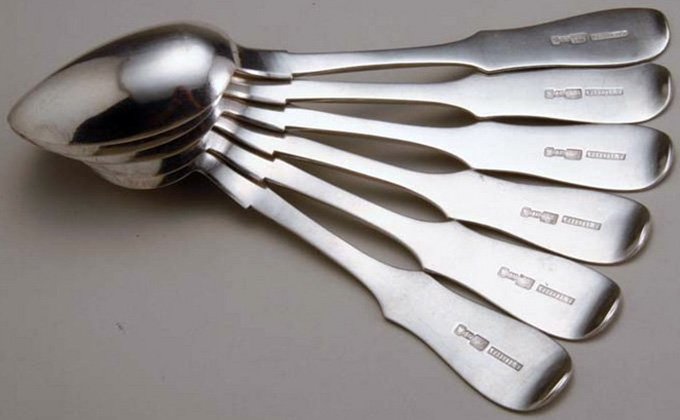
In 1740, the silver mining industry began to develop in Russia. Before that, silver was imported from Europe. And then the Russian people turned around. Samovars, teapots, mirrors, lamps, clocks, snuff boxes were made of silver. And Paul I even ordered silver window frames for the Mikhailovsky Castle! Mother Catherine II had dresses made of silver brocade and embroidered with silver, and even a wig of silver threads. They embroidered with silver, made fabrics from silver.
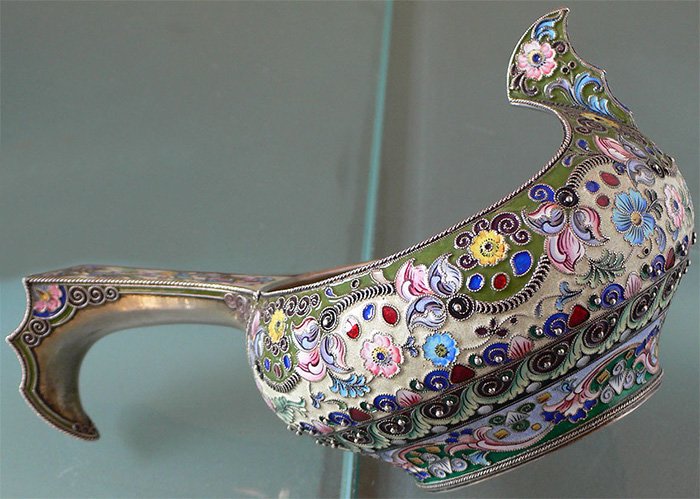
In the shops of the Moscow Silver Row, where they traded in gold and silver goods, there was also a huge selection of jewelry that was in demand: women's and men's rings, chains, brooches, earrings, cufflinks, buttons, etc.
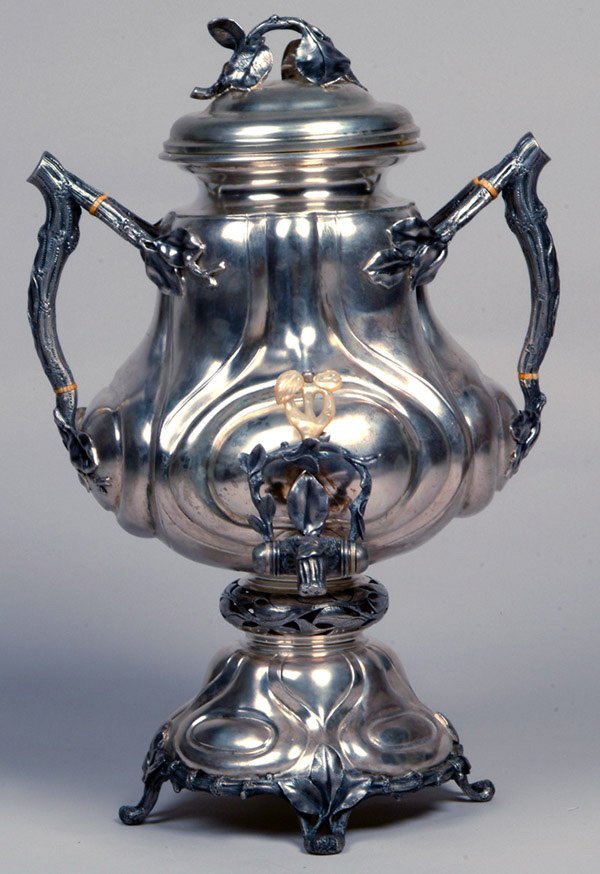
XVIII century - Rococo style. Secular women of fashion adorned themselves with high hairstyles, wigs with metal hairpins or hairpins, which were made in the form of flowers. Openwork scanned flowers were fixed on springs, thanks to which they swayed on the lady's head even with light movement. At the same time, sklavage was a popular decoration. Made of precious metal, and very often of silver, the bow was worn on a ribbon around the neck. Beautiful colors, proportionality of details - everything speaks of the high jewelry skill of Russian craftsmen.
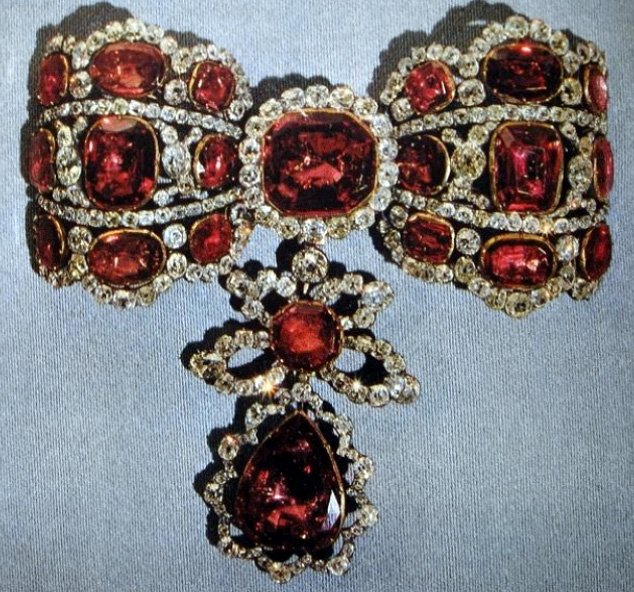
In the 18th century, bow earrings became fashionable. The most interesting ones were made by Tula craftsmen. Several of these are kept in the collection of the State Museums of the Moscow Kremlin. There are also silver bow earrings in the collections with a rare stone aventurine - a brown stone with golden sparkles.
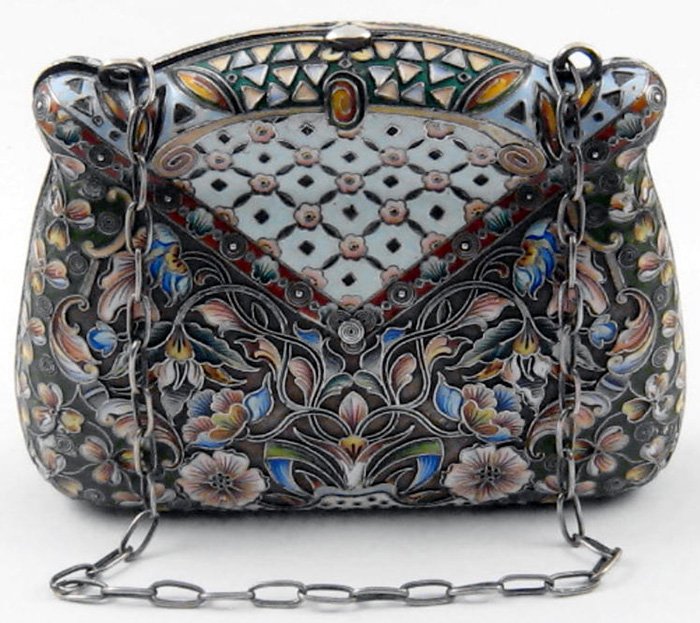
Jewelry by Russian craftsmen was attracted by the successful color combination of enamels, silver and precious stones, well-found proportions, and extremely skillful use of jewelry technology.

Silver craftsmanship in Russia has reached perfection and it is associated with the name of Gustav, and then Carl Faberge. The silver threads folded into the finest laces, like patterns painted in frost on the window pane.
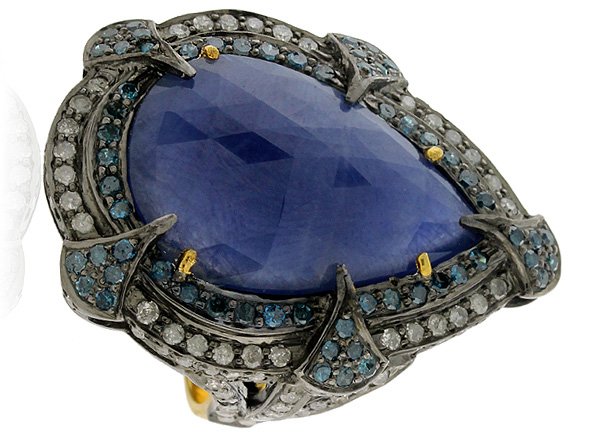
New technologies in the extraction and processing of silver, which began to be used in America in the thirties of the last century, made it possible to achieve high quality - 925 standard. Silverware has become available to almost everyone.
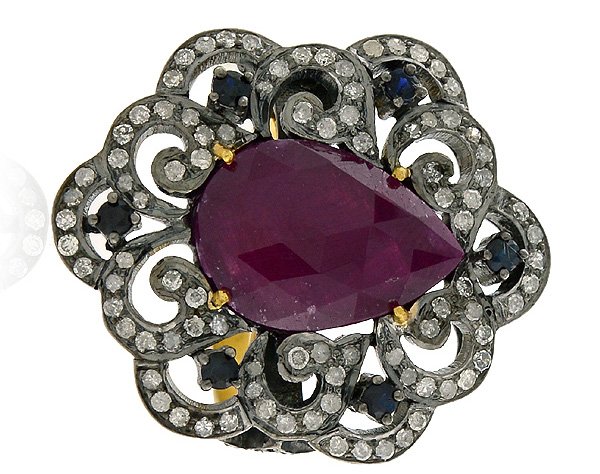
In 2000, Christian Lacroix presented a collection in which silver jewelry took pride of place.
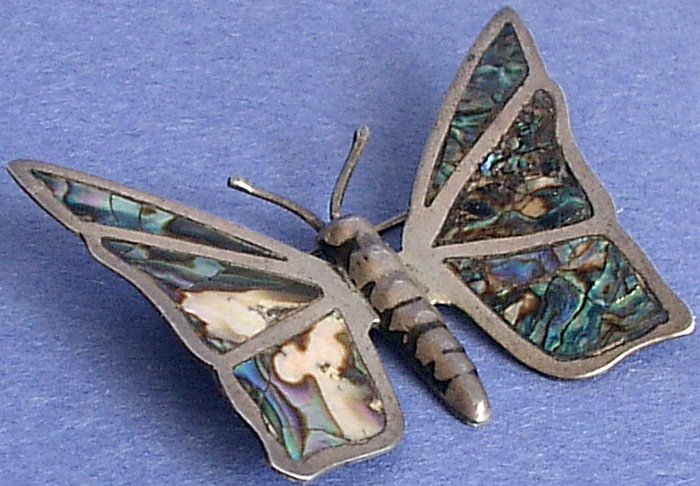
Today the jewelry art of Russia has risen to a new level. Better technologies, new materials, proportions and colors. Russian girls love jewelry made of gold and silver. Perhaps because silver is a metal that, in the hands of a jeweler, can convey the beauty of our northern nature and highlight the beauty of northern women. Perhaps this is the basis of the passion of the girls of the North for silver. Silver jewelry - even if you wear a lot of them - a few bracelets or rings - they won't look vulgar. Your look will be stylish or vintage. But with gold, it's not so simple. Here you need to know when to stop.

The heirlooms that remained from our grandmothers and great-grandmothers are not only brilliant diamonds or sapphires, emeralds or rubies, but also silver jewelry - old earrings, pendants, bows-sklavage, brooches. True, brooches are not in high esteem now, since the main lovers of jewelry are young women and girls, and a brooch is an adornment that emphasizes majesty and gravity. And yet the antique silver brooches are magnificent, the lace work of the master jeweler of yesteryear attracts and enchants. Nowadays, the return to Russian classics is especially felt in the jewelry business.
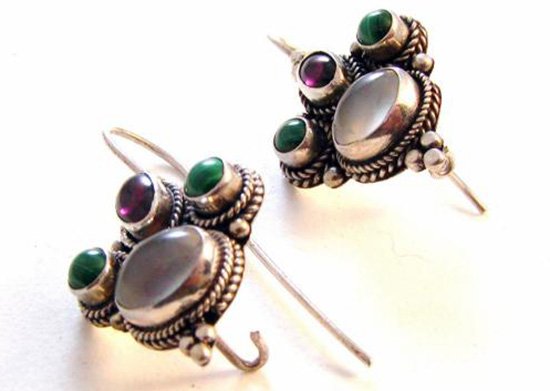
Looking at silver jewelry, one can call them old, cult, and trendy jewelry. They are both old and never age.
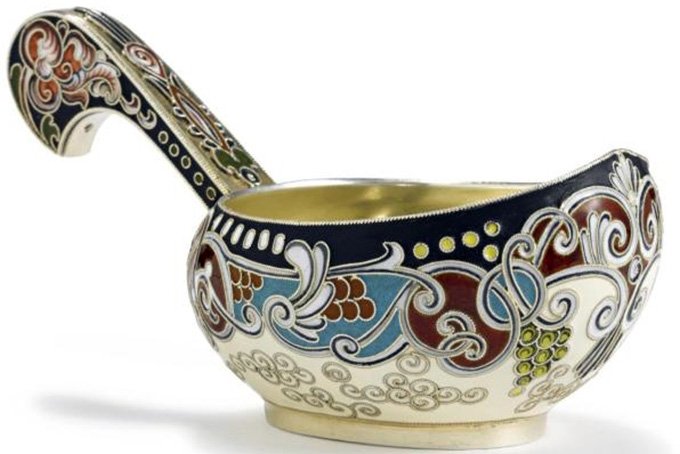
Comments and Reviews
Add a comment
Rating news
Shades of clothing that make women look younger
What shades of hair make women younger: rules and photos
Funny wedding dresses - photos and ideas
12 most expensive down jackets for the winter
How to look 25 at 40: tips from supermodels
Beautiful schoolgirls
Anti-aging haircuts and hairstyles for women
Fashionable skirts for autumn and winter
Fashionable women's trousers for the cold season
Fashionable and stylish sandals for summer 2024
Spring-summer 2024
 Fashionable dresses and tops with thin spaghetti straps
Fashionable dresses and tops with thin spaghetti straps
 Bandana tops: how to wear stylishly and beautifully
Bandana tops: how to wear stylishly and beautifully
 How to put together the perfect men's wardrobe for the summer
How to put together the perfect men's wardrobe for the summer
 Trendy shorts for spring-summer 2024
Trendy shorts for spring-summer 2024
 Fashionable skirts for spring-summer 2024: a guide to online shopping
Fashionable skirts for spring-summer 2024: a guide to online shopping
 The most fashionable dresses spring-summer 2024: styles and colors
The most fashionable dresses spring-summer 2024: styles and colors
 Fashionable total look 2024: image ideas and trends
Fashionable total look 2024: image ideas and trends
